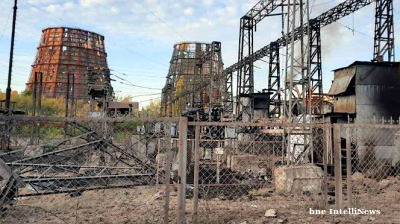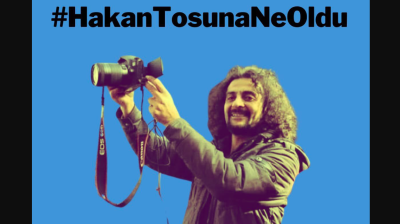POLITICAL
Armenia entered 2021 desperate to shrug off the heavy hangover it has from 2020. Last year got off to a tremendous start with the momentum of rosier than expected recorded growth and a buoyant reformist prime minister, Nikol Pashinian, who was determined to find ways to allow the small South Caucasus nation of 3mn punch above its weight. But the relentless coronavirus crisis coupled with the bloody defeat suffered at the hands of Azerbaijan in the autumn war over the Nagorno-Karabakh enclave have fair knocked the Armenians off their feet.
Since he bowed to the “inexpressibly painful” decision to sign the Russian-brokered ceasefire that ended the 44-day conflict in November, Pashinian has faced weeks of impassioned demonstrations calling on him to quit. What is not yet clear is whether those wanting him out are largely those who were not enamoured of him in the first place—his biggest enemies have described him as a “political corpse” —or are far more varied ranks swelled by many former backers of the PM, who took office after the spring 2018 Armenian “Velvet” Revolution.
Whatever the case, Pashinian is hanging on, claiming he had no choice but to sign the truce deal on offer because Armenia’s armed forces had advised him that Azerbaijan, operating its fearsome Turkish killer drones, was poised to claim a victory that would have handed it the entirety of Nagorno-Karabakh. But many of those riled by Pashinian’s actions before and during the war say they are angered that he unnecessarily upset Azerbaijan prior to the clash by visiting the ethnic Armenian-controlled breakaway territory and speaking of a “Greater Armenia”. Added to that, say his critics, his government entirely failed to appreciate how dangerous oil and gas-rich Azerbaijan’s military build-up—backed by substantial drone and other arms acquisitions from Turkey and Israel—could prove to be to Armenia and the contested lands. During the conflict, impoverished Armenia often found itself with little to turn to but outdated Soviet weaponry.

Nikol Pashinian, left, and Ilham Aliyev, in the January 11 trilateral meeting with Vladimir Putin (Image: Kremlin handout).
Giving his account of how the meeting went, Pashinian was clearly attempting to talk as tough as the precarious situation allowed, understandably given the heated demands for him to stand down and proceed to an early election back home. Pashinian told reporters that the Nagorno-Karabakh conflict with Azerbaijan “is still not settled” and that key outstanding issues needed solving immediately, no doubt with the Armenian prisoners of war still in the hands of Azerbaijan foremost in mind. Nevertheless, Putin, Aliyev and Pashinian issued a joint statement announcing the creation of a trilateral working group to oversee the "unblocking of all economic and transport links" between Azerbaijan, Armenia and Nagorno-Karabakh.
Azerbaijan has said that the ceasefire agreement provides for a Russian-guarded land corridor across Armenian territory that would connect it to Azerbaijani exclave Nakhchivan, which borders Turkey, a bellicose backer of Azerbaijan in the conflict. However, Armenia has said that the deal, while referring generally to the need to unblock economic and transportation infrastructure, does not mention anything so specific. Thomas de Waal, a Carnegie Europe expert on the Caucasus region, has said it would be “incredibly difficult” for the Armenians to facilitate the creation of such a corridor through its territory.
It’s a rather big “if”, but if Armenia (with a GDP of towards $13bn) could establish diplomatic relations with Azerbaijan (GDP: $45bn) and Turkey (the Middle East’s biggest economy with an economic output of around $760bn) that would pave the way for substantial trade expansions and a big shot in the arm for the Armenian economy, plagued by unemployment presently at around 24%, would be in store. As things stand, resolving the final status of the Nagorno-Karabakh lands remains a perplexing challenge and Armenia is busy banning Turkish products from its supermarket shelves, replacing them with Iranian alternatives.
Perhaps the biggest obstacle to the war flaring up once again is Russia’s determination not to allow Turkey to gain too big a foothold in its Caucasus backyard. Iran (GDP: $611bn) is also wary of such a prospect—for geopolitical and economic reasons it would not like to lose its northern border with Armenia, whatever the feelings of the one-fifth of its population that are Iranian-Azerbaijani.
Moscow in recent weeks has possibly been sending signals to the victorious Azerbaijanis not to push their luck—it has banned imports of Azerbaijani tomatoes, a big export earner for Baku, and has stepped up an inquiry into the Azerbaijani shooting down of a Russian helicopter that caused the death of its crew—but its strategy has long been to maintain good relations with both Yerevan and Baku.
The other player still in the picture is France, home to a sizeable Armenian minority. US President Donald Trump showed absolutely no interest in addressing the outbreak of war and has said nothing of consequence about maintaining the peace, but Joe Biden, who will take over from Trump on January 20, will look to exert some influence across the Caucasus and that could give Paris a chance to have more of a say in finding a sustainable way forward acceptable to Armenia. On the other hand, Turkey’s role in affairs could be diminished as part of the price Ankara might have to pay to achieve stable relations with the new White House.
MACRO, FISCAL & FINANCIAL
It’s hard to name a country that didn’t have an annus horribilis in 2020, but the Republic of Armenia had a particularly bad one and that’s reflected in the downgrading of the 2021 growth forecasts for the country.
In 2021, Armenia can expect growth of 3.1%, the World Bank said in the January 2021 edition of its Global Economic Prospects report, rather than the 4.9% anticipated in the June 2020 edition. Armenia, which beat expectations by achieving a GDP expansion of 7.6% in 2019, could also reckon with a 2020 contraction as stark as 8%, it added. The previous forecast, in the June edition, was for a decline of 2.8%. The World Bank warned of the additional economic damage that could be caused this year by an unravelling of the truce between Yerevan and Baku.
In mid-December, the International Monetary Fund (IMF), which predicts Armenian growth at 3.5% in 2021, said in a note: “Armenia’s economy has been hit hard by twin shocks: the COVID-19 pandemic (now in its second wave), and the recent military hostilities involving the Nagorno-Karabakh conflict zone. Reflecting these shocks, growth is expected at -7¼ percent this year [2020], with the fiscal deficit and debt rising considerably.
“Nonetheless, the authorities have responded promptly with healthcare and anti-crisis measures to limit the pandemic’s impact while protecting vulnerable groups and safeguarding macroeconomic stability.”
The European Bank for Reconstruction and Development (EBRD) forecasting for Armenian GDP in 2020 and 2021 settles on a 5% contraction followed by a 4% rebound, with the recovery “subject to considerable uncertainty related to the future path of the pandemic”.
Looking at annual inflation, the Asian Development Bank (ADB) expects 1.4% in 2020 to be followed by 2.2% in 2021. The World Bank predicts 0.9% and 2.0%.
The EBRD noted that “in the absence of significant inflationary pressure, the refinancing [benchmark] rate was lowered four consecutive times in 2020, to 4.25 percent in September.” However, in mid-December, the central bank cited lurking inflation as it hiked the rate to 5.25%.
As 2020 drew to its close, the central bank intervened in the foreign exchange market, selling $60mn to defend the Armenian dram (AMD) and ensure the steady functioning of the country’s financial markets. The AMD breached several pysychological thresholds as the year wore on, breaching 500 per USD in mid-November. By the end of January 15, it stood at AMD525. At the start of 2020, it was trading at around AMD480.
Assessing the current account balance, the ADB estimated deficits of 8.6% of GDP in 2020 and 8.2% in 2021 and the IMF 8.8% and 8.2%.
In trade, the export value of Armenian goods and services fell 4.4% y/y in the first nine months of 2020 to $1.83bn, Armenian Statistics Committee figures showed. The value of goods and services imported by Armenia in the same period dropped 13.7% y/y to $3.23bn.
Around 11% of Armenia’s GDP is accounted for by remittances. The full-year data isn’t yet in but the EBRD noted: "Remittances contracted by nearly 40 per cent year-uron-year in April-May. The decrease in remittances nearly levelled off in June-July, as a strong increase in transfers from the US partially offset falling remittances from Russia."
Trade with Iran has been gently expanding thanks to a two-year preferential trade agreement launched by Tehran and the Moscow-led Eurasian Economic Union (EEU) in October 2019.
In February 2020, the United Nations World Tourism Organization (UNWTO) was describing Armenia as one of the world’s fastest growing destinations for tourism—the country ranked 12th with growth of 14.4% in the list of the 20 fastest growing nations for tourism, according to data on the latest UNWTO World Tourism Barometer. As things turned out tourism was of course devastated by the pandemic, falling by 77.5% y/y from January to September. Things can’t have got any better in the remainder of 2020, given that war broke out in late September.
Graph: Government Debt Dynamics.
Ratings agency RAEX-Europe assessed that the 2020 levels of both public and publicly guaranteed debt and central government debt increased “drastically” by 12.8 pp to 66.3% of GDP and 13.2 pp. to 63.1% of GDP, respectively. “We expect government debt to grow up to 259% of budget revenues in 2020 and approach its peak of 294% in 2021,” it said, adding: “Nonetheless, the quality of the fiscal policy is estimated as adequate and transparent.”
RAEX-Europe on January 8 confirmed the sovereign government credit rating of Armenia at 'BB-' (Sufficient level of creditworthiness of the government) in national currency and at 'BB-' (Sufficient level of creditworthiness of the government) in foreign currency, but the rating outlook was changed from stable to negative. The change means that on a mid-term perspective there is a high probability of the rating score undergoing a downgrade.
“However, we anticipate the Central Bank of Armenia (CBA) to continue to maintain an adequate expansionary monetary policy. In addition, the inflation rate remains low and has risen only slightly closer to the end of the year whereas the banking system demonstrates a stable stance,” the agency said.
Weighing up the state of the banking sector, RAEX-Europe said it “may show signs of weakening in the future”, adding: “The financial soundness indicators of the banking sector have remained generally stable throughout the year. As of the end of 3Q 2020, ROA was 1,63%, slightly above the analogous figure of 2019 (1,59%). NPLs to total loans ratio demonstrated a minor increase to 6,0%, whereas a capital adequacy ratio declined by about 0,5p.p. from the beginning of 2020 to the end of 3Q 2020 to 17%. Due to the stable demand for mortgages and demand from construction sector, credit to the economy expanded by 12% in October y-o-y.”
Capital buffers of the banks had shown a slight decrease since December 2019, the ratings agency observed, saying: “Despite currently not demonstrating any signs of deterioration, we anticipate the banking sector to weaken in the future since all effects of the pandemic as well as of the military conflict on it will be visible with a delay. Moreover, concentration of the banking system on the three largest banks (Ameriabank, Armbusinessbank and Ardshinbank) remains high and exceeds 42% of total assets.”
Armenia’s foreign exchange reserves are thought to have in 2020 declined to $2.28bn from $2.85bn a year earlier, with the total equal to 5.2 month of imports, RAEX-Europe said.
In November, Armenia’s largest universal bank, Ameriabank, reported an unaudited net profit of Armenian dram (AMD) 6.8bn ($14.1mn) for the third quarter. The end of the year saw Ameriabank place Armenia’s first ever green bond.
September saw the Armenia Securities Exchange (AMX) and Cbonds agency sign a cooperation agreement that means AMX can place quotes and detailed information on the Premium Cbonds website on securities and bonds being traded on its platform.
The month also brought news that the Warsaw Stock Exchange (WSE) management board and Armenia’s central bank had signed a non-binding term sheet on negotiations for the former to acquire a 65% majority interest in the AMX.
OTHER MATTERS
EEU members Armenia and Belarus would like to see the trade bloc set uniform energy tariffs and thus cut the cost of the Russian natural gas they are heavily dependent on, but the idea got nowhere with Vladimir Putin in 2020. He suggested that Yerevan and Minsk would have to consent to even deeper economic integration with Moscow before the concept would even be considered.
The pandemic disrupted renovation work at Armenia’s nuclear plant, Metsamor. Russia has previously financed upgrading of the plant, but Armenia has opted to explore new funding arrangements this time around.

Activists encamped by the Lydian Armenia gold mine near Jermuk have been protesting against it since 2018 (Image: Bankwatch).
Renewed environmental protests and clashes over a controversial gold mine near Jermuk in 2020 again highlighted the Armenian government’s continuing indecisiveness over the future of Lydian Armenia project. The mine contract with the subsidiary of a British firm was signed by the government ousted by PM Pashinian and it has pitted grassroots activists, of the type that were instrumental in bringing Pashinian to power, against proponents of the project—including Western embassies and investors—who insist that it will provide the kind of jobs that he has promised. The saga is set to continue in 2021.
Ucom CEO Ara Khachatryan in September called for a consolidation in the Armenian telecoms market to raise necessary investments for new customer services to stem the sector’s decline. He said the decline was “expected” against the backdrop of global technology advancement and wider access to the internet, leading to traditional telecoms services such as voice calls being replaced.
Armenia will this year continue wagering its chips on technology. As a country with scant natural resources and somewhat isolated because of its fraught relations with neighbours Azerbaijan and Turkey, the country is making a priority of turning to human capital, doubling-down on high-tech research and development. Tech in recent years became the largest foreign investment in Armenia.
Armenia and Russia in September signed a protocol aimed at the development of the South Caucasus Railway operator, the Armenian subsidiary of Russian Railways.
Armenia in 2020 moved up 13 places in the latest edition of The Heritage Foundation’s Index of Economic Freedom to rank 34th out of 186 economies. With an eye on further improving its ranking in 2021, the government said it is pursuing structural reforms, export promotion and greater foreign investment to boost growth.
Features

Ukraine’s growing energy crisis promises a cold and dark winter
Since the summer, Kyiv has changed tactics. Given the almost complete failure of Western oil sanctions to curb Russian oil exports, it has been targeting Russian oil refineries. The Kremlin has struck back, targeting Ukraine's power system.

Russia, China sign off on Northern Route shipping deal to slash global freight times
Russia and China have signed a landmark agreement to develop and commercialise the Northern Sea Route (NSR), after Beijing tested the route last month, that could slash Europe-Asia cargo transit times and challenge the primacy of the Suez Canal.

Sri Lanka’s economic escape
Sri Lanka’s recovery over the past year reads like a narrow escape rendered into a cautious, albeit unfinished success story.

BEYOND THE BOSPORUS: Investigators feel collar of former Turkish central bank deputy governor
Regime gangs continue to hustle for gains. Some Erdoganist businessmen among the losers.







